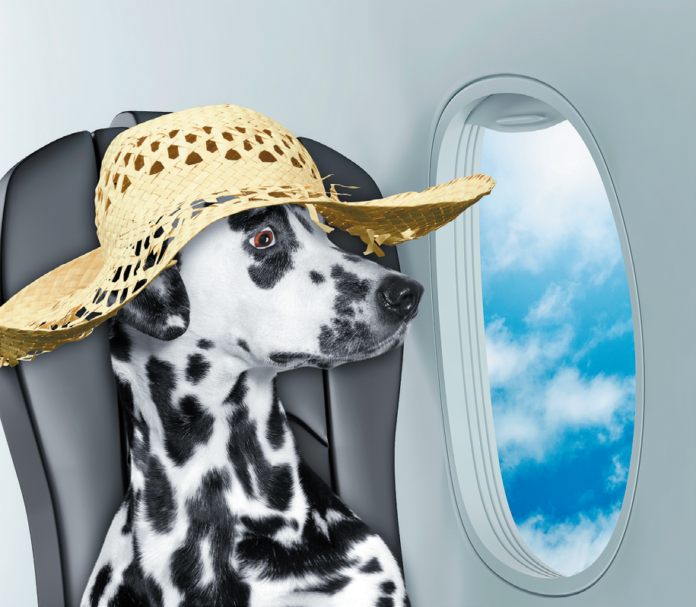The Department of Transportation has announced that emotional support animals will no longer be treated the same as service dogs on commercial flights. That means airlines no longer have to let them fly for free. And furthermore, they must be stowed in a carrier under the seat rather than sit with the human passengers, or, if they are too big, put in the belly of the plane with the cargo (which we think should be avoided if at all possible, even if it means taking a long car trip instead of flying). American Airlines, Southwest, and Alaska Airlines are among the companies that no longer distinguish emotional support dogs from plain old pets.
Service dogs, however, will still go on planes free of charge and in the company of their guardians in the regular cabin without being confined to a carrier.
The difference between a service dog and an emotional support animal
A service dog is trained to conduct highly specific tasks to help people with disabilities. Examples include, but are not limited to, guiding people who are blind, pulling a wheelchair, protecting a person who is having a seizure, flipping light switches, picking up dropped objects, distracting someone who has started stimming (engaging in a repetitive body movement), and alerting deaf people to an alarm. Not only is a service dog trained to perform such tasks, but he is also trained for deportment. He will virtually never come over and sniff other people in the crotch, bark when he isn’t supposed to, or cause other disturbances. Service dogs are not, in fact, pets in the pure sense of the word. They are animals with a job. The Internal Revenue Service classifies them as a deductible medical expense.
An emotional support animal, by contrast, simply provides generalized comfort and companionship to those who have a health professional’s note for such psychological conditions listed in the DSM as “anxiety” or “depression.” They are not covered under the Americans with Disabilities Act, which allows true service dogs to go anywhere the public is normally allowed to go: restaurants, museums, libraries, the emergency room of a hospital, houses of worship, and so on.
It’s not that anxiety and depression are never severe enough to become disabling. There are in fact psychiatric service animals that are afforded the same considerations as other service animals. Their role might be to calm a person with post traumatic stress disorder (PTSD) during an anxiety attack, for instance. It’s that emotional support animals, unlike psychiatric service dogs, aren’t trained to do something specific to attenuate the effects of the problem.
Moreover, anxiety and depression are vague enough terms that some people have been abusing the system by paying $100 or $200 for notes from online mental health counselors they have never met to attest to their psychological problem and their “requirement” for an emotional support animal. Presto, with the note, even a big unruly dog (or cat, or other animal) could fly for free — and potentially ruin other people’s trip.
Re-thinking your dog and travel
The new rules on travel for emotional support animals make summer a good time to think about taking your pet with you when you go on vacation. If you have a service dog, taking him along on trips is a medical necessity. But what about a regular pet dog, or one that you consider an emotional support animal?
The Humane Society of the United State recommends leaving your dog at home with a sitter, if at all possible. Not only might a dog not enjoy the hustle and bustle of travel (especially if he has to be left in the cargo hold of a plane). A traveling dog also often has to be left in hotel rooms and therefore doesn’t get to participate in the vacation experience the same way as other family members.
You really want to think carefully about what would be in your dog’s best interest, that is, what would support her emotionally. If you’re going to take a two-hour drive to a rental property at the shore where your dog will be with you for most of the time and get to enjoy romping and sniffing around her new environs, bringing her along might be a wonderful kind of environmental enrichment. But if your dog is going to have her routine upended only to be by herself much of the time, and especially if that would entail a long trip during which she would need to be separated from you, finding a wonderful situation for her at home while you are away might be the best choice.
Think of how sweet the reunion will be!





